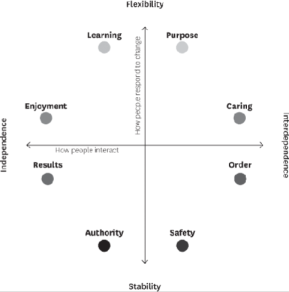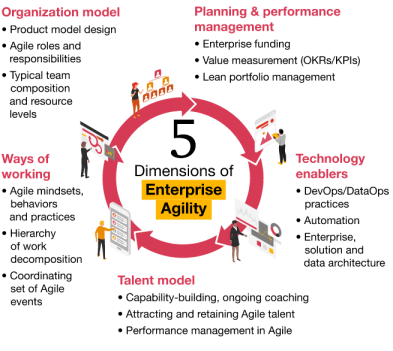Articles

Eight distinct cultural styles
1. Caring Culture: This culture values relationships and trust. The work environment is warm and supportive, encouraging collaboration. People are loyal and leaders focus on teamwork and positive relationships.
2. Purpose Culture: Characterized by idealism and helping others. The workplace is compassionate, focusing on making a positive impact on the world. Employees are driven by sustainability and global issues, with leaders highlighting shared ideals and greater causes.
3. Learning Culture: Defined by exploration and creativity. The environment is open to new ideas and encourages inventive thinking. Employees are curious, and leaders stress the importance of innovation, knowledge, and adventure.
4. Enjoyment Culture: This is all about fun and excitement. The workplace is light-hearted, and employees are encouraged to do what makes them happy. It's a playful environment where leaders value spontaneity and humour.
5. Results Culture: Focused on achievement and success. The environment is goal-oriented and rewards performance. Employees are motivated by success, and leaders emphasize reaching objectives.
6. Authority Culture: Here, strength and decisiveness are key. The environment is competitive, with an emphasis on individual advantage. Employees value control, and leaders project confidence and dominance.
7. Safety Culture: Centres on planning, caution, and preparedness. The workplace is predictable and risk aware. Employees seek security and leaders prioritize realistic planning and anticipating changes.
8. Order Culture: Focuses on respect, structure, and following norms. The environment is methodical, with an emphasis on adherence to rules and fitting in. Employees value cooperation, and leaders stress the importance of procedures and traditions.
The advantages and disadvantages comparation can be found at the end of the article.
Each style is different and either of them is wrong or good itself. But authors who created these styles also created the table of distinction and simultaneous co-work of this culture styles. This chart shows whether the different styles of corporate culture work together and how much effortisrequired to run a company that combines multiple styles.The chart divides the different cultures according to the degree of independence and dependence (vertically) and adaptability to change (horizontally). Styles that are neighbouring in the framework, e.g. safety and order, frequently coexist within organizations and their people. In contrast, styles that are located across from each other, such as safety and learning, are less likely to be found together and require more organizational energy to maintain simultaneously. An organizational culture can be defined by the absolute and relative strengths of each of the eight and by the degree of employee agreement about which styles characterize the organization.
(Source: Groysberg et al., 2020)
Next schedule represents the advantages and disadvantages of each culture style.
(Source: Groysberg et al., 2020)
Based on the study and article:
Groysberg, B., Lee, J., Jesse, P., & Cheng, J. Y.-J. (2020). The Leader’s Guide to Corporate Culture. In HBR’s 10 Must Reads on Building a Great Culture (pp. 7–29). Harvard Business Review Press.
Other Article

Corporate culture in context of strategy and leading the company
Strategy and culture are key tools for leaders to keep their organizations effective and viable. By: Martina Švecová

List of the articles sorted by issues
Corporate culture in context of strategy and leading the company By: Martina Švecová Eight distinct cultural styles By: Martina Švecová

Agile as a way of thinking and part of corporate culture
One of the core principles of the Agile way of thinking is adaptability. By: John Melek and Sama Khafaga

 Add Statement
Add Statement
 Authorization
Authorization
